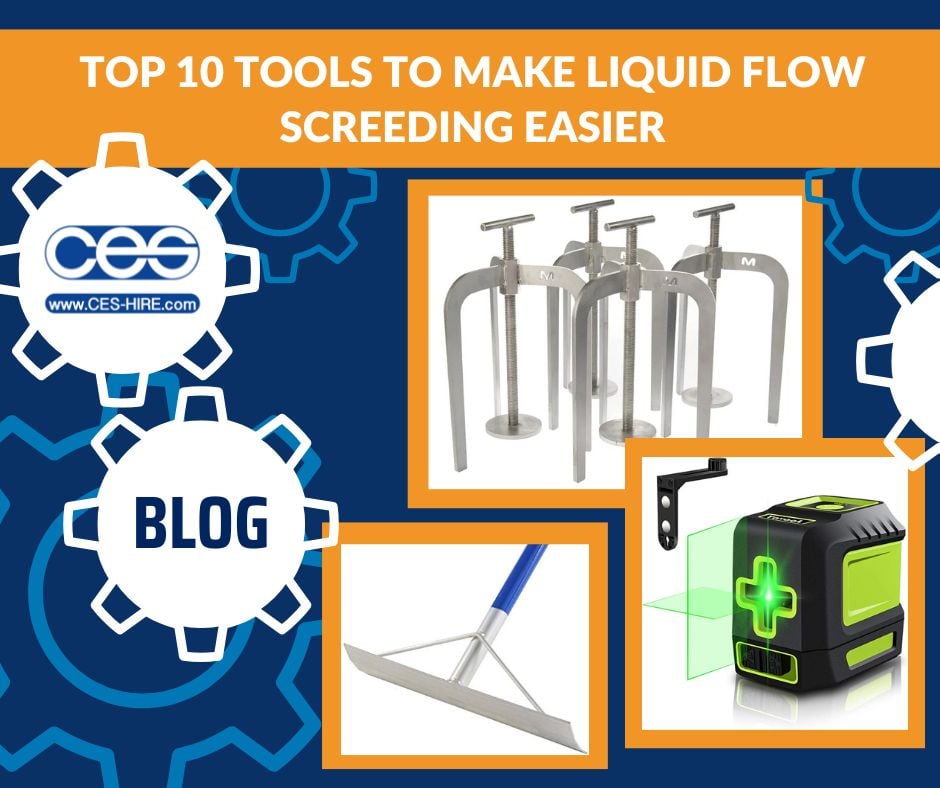Liquid flow screed is certainly having a moment in the construction industry currently as an increasingly popular method of quickly laying a strong and supremely flat subfloor. There are many benefits to choosing to apply liquid flow screed and it’s a great investment for both builder and customer. Advantages include:
- Quick application by pouring in one go rather than back-breaking shovelling. Flow screed can be applied ten times quicker than traditional screed pumping 25m³ in 20 minutes
- Speedier finishing with no need to compact, sand or scrape. It simply requires a quick tamp of the dapple bar to release air
- Much quicker drying time. Whilst products vary you can typically walk on the surface after 24 hours and some flooring finishes can be laid as quickly as 7-14 days later. Traditional screed is frequently laid to a minimum of 50mm depth with a day of drying time per mm, however liquid screed is laid at a much thinner 25mm-35mm depth.
- By pumping liquid flow screed using a machine you are gaining all the health benefits of less strain on your body as you won’t be stooping and shovelling heavy material
- It is less susceptible to shrinkage and needs less expansion joins
- It provides a much stronger and more durable surface ideal for high-footfall spaces such as commercial or industrial buildings
- Long-term this solution is far more energy efficient and perfect for underfloor heating as it completely surrounds the elements and distributes the heat incredibly well.
Tools for Preparation
Screed Flow cone and plate
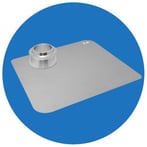 A screed slump test kit is essential prior to an installation. A flow cone and plate will check the consistency of your liquid flow screed and ensure it is workable. It shouldn’t be too wet or too dry. This testing kit will check the slump and flow in accordance with BS8204-7. The correct consistency will prevent drying shrinkage and other problems. To use, simply place the cone on the plate, fill the cone with screed and remove the cone. The spread is then measured to determine flow-ability.
A screed slump test kit is essential prior to an installation. A flow cone and plate will check the consistency of your liquid flow screed and ensure it is workable. It shouldn’t be too wet or too dry. This testing kit will check the slump and flow in accordance with BS8204-7. The correct consistency will prevent drying shrinkage and other problems. To use, simply place the cone on the plate, fill the cone with screed and remove the cone. The spread is then measured to determine flow-ability.
DPM Polyethene Sheet
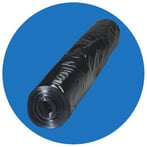 DPM (damp proof membrane) is an essential part of your preparation. Since liquid screed is free-flowing you must install a layer of polyethylene to encapsulate your screed and prevent it from escaping. This watertight protective membrane should curl up at the edges and be secured to the wall. 1200 gauge DPM is also used to stop moisture from the ground entering a property, particularly important when working on the ground floor. The polythene will not only protect the property from issues such as rising damp but also protect the screed and subsequent flooring finish. Polythene sheeting is also advised when installing your underfloor heating systems.
DPM (damp proof membrane) is an essential part of your preparation. Since liquid screed is free-flowing you must install a layer of polyethylene to encapsulate your screed and prevent it from escaping. This watertight protective membrane should curl up at the edges and be secured to the wall. 1200 gauge DPM is also used to stop moisture from the ground entering a property, particularly important when working on the ground floor. The polythene will not only protect the property from issues such as rising damp but also protect the screed and subsequent flooring finish. Polythene sheeting is also advised when installing your underfloor heating systems.
Pump Primer
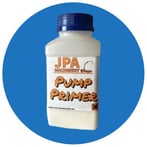 You should never pump through dry hoses and we would recommend using a pump primer to prep your hose before a liquid screed install. A pump primer not only protects your hoses and keeps them in much better condition for longer but it also helps the job run more smoothly and get completed quicker. A primer eases the pressure on the material being pumped and optimises pumping capacity. The increased ease of material flow will also prevent hose blockages.
You should never pump through dry hoses and we would recommend using a pump primer to prep your hose before a liquid screed install. A pump primer not only protects your hoses and keeps them in much better condition for longer but it also helps the job run more smoothly and get completed quicker. A primer eases the pressure on the material being pumped and optimises pumping capacity. The increased ease of material flow will also prevent hose blockages.
Tools for levelling
Screed Levelling Tripods
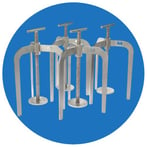 A level floor is an absolute must and whilst liquid flow screed will ensure a supremely smooth surface, you need to pour to the correct level across your project. This is where screed levelling tripods step in and are a key tool for screeders and groundworkers. These stainless steel tools ensure your screed is installed to the correct and desired level. They are essentially a three-legged device with a central screw threaded shaft at the base of which is a circular disc. This disc can then be raised or lowered according to your levelling requirements. These tools are used in tandem with a laser level to ensure all the tripod levels match. The tripods should be placed 1-2m apart and should be removed and cleaned promptly after pour to ensure the screed doesn't set on them and cause damage.
A level floor is an absolute must and whilst liquid flow screed will ensure a supremely smooth surface, you need to pour to the correct level across your project. This is where screed levelling tripods step in and are a key tool for screeders and groundworkers. These stainless steel tools ensure your screed is installed to the correct and desired level. They are essentially a three-legged device with a central screw threaded shaft at the base of which is a circular disc. This disc can then be raised or lowered according to your levelling requirements. These tools are used in tandem with a laser level to ensure all the tripod levels match. The tripods should be placed 1-2m apart and should be removed and cleaned promptly after pour to ensure the screed doesn't set on them and cause damage.
Laser Level
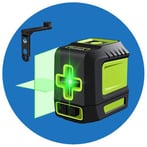 Once the datam level has been determined (this is the required level of the floor prior to the flooring finish), your laser level can be put to work. This very handy tool will project a straight level line onto walls and floors. This ensures all your screed levelling tripods are perfectly aligned and will achieve the most precise results.
Once the datam level has been determined (this is the required level of the floor prior to the flooring finish), your laser level can be put to work. This very handy tool will project a straight level line onto walls and floors. This ensures all your screed levelling tripods are perfectly aligned and will achieve the most precise results.
Tools for Finishing
Dapple Bar
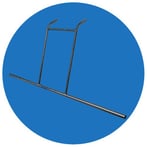 A dapple or tamping bar will remove air bubbles in your liquid/self-levelling screed. Removing air pockets will ensure you achieve that perfectly flat, smooth surface finish. With your first tamp you should be a little more vigorous with the movement to release the trapped air and the second you can be more gentle to create the desired smooth finish.
A dapple or tamping bar will remove air bubbles in your liquid/self-levelling screed. Removing air pockets will ensure you achieve that perfectly flat, smooth surface finish. With your first tamp you should be a little more vigorous with the movement to release the trapped air and the second you can be more gentle to create the desired smooth finish.
Concrete Placer
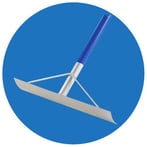 Whilst installing liquid flow screed is generally all about manoeuvring the hose around the project area and allowing the material to do the hard work and level out, you may find you need to re-distribute material. This is where a concrete placer (also known as a spazzle) can be a handy tool to have in your kit. This lightweight tool will easily move and redistribute screed.
Whilst installing liquid flow screed is generally all about manoeuvring the hose around the project area and allowing the material to do the hard work and level out, you may find you need to re-distribute material. This is where a concrete placer (also known as a spazzle) can be a handy tool to have in your kit. This lightweight tool will easily move and redistribute screed.
Spiked Roller
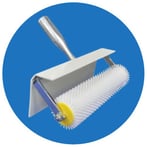 A spiked roller or aeration roller can be useful to have on hand to remove bubbles or trapped air present in floor levelling compounds. This tool rotates to evenly aerate the material ensuring complete uniformity as the floor cures.
A spiked roller or aeration roller can be useful to have on hand to remove bubbles or trapped air present in floor levelling compounds. This tool rotates to evenly aerate the material ensuring complete uniformity as the floor cures.
PPE
Wellies
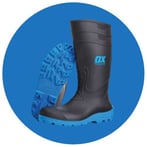 When using any kind of building material, PPE is vital to protect yourself and your colleagues. Installing liquid flow screed means you will inevitably be wading through the material itself as the hose pumps out the screed. Direct contact on skin could cause burns and skin damage so safety wellington boots are essential as well as full length clothing so areas of skin are not exposed to any chemicals. Always be sure to read safety data sheets for full details of specific hazards of each material you use.
When using any kind of building material, PPE is vital to protect yourself and your colleagues. Installing liquid flow screed means you will inevitably be wading through the material itself as the hose pumps out the screed. Direct contact on skin could cause burns and skin damage so safety wellington boots are essential as well as full length clothing so areas of skin are not exposed to any chemicals. Always be sure to read safety data sheets for full details of specific hazards of each material you use.
Gloves
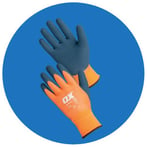 As you’ll be handling machines, hoses and tools that come into contact with liquid flow screed, it is important to wear gloves. As mentioned above, exposed areas leave the skin susceptible to splashes which can go unnoticed and cause lasting damage. Always find well-fitting gloves that allow you the dexterity to carry out your job with ease whilst protecting yourself.
As you’ll be handling machines, hoses and tools that come into contact with liquid flow screed, it is important to wear gloves. As mentioned above, exposed areas leave the skin susceptible to splashes which can go unnoticed and cause lasting damage. Always find well-fitting gloves that allow you the dexterity to carry out your job with ease whilst protecting yourself.

